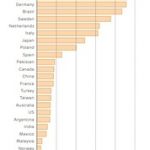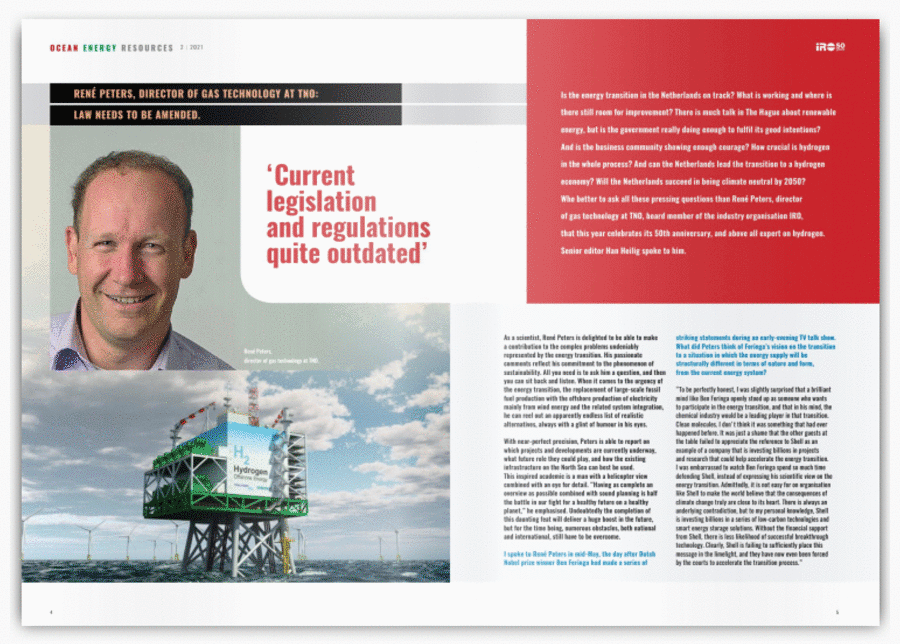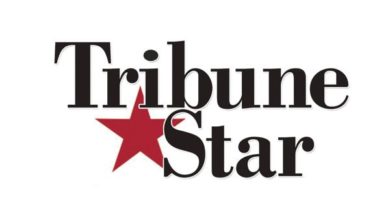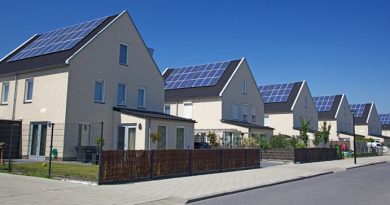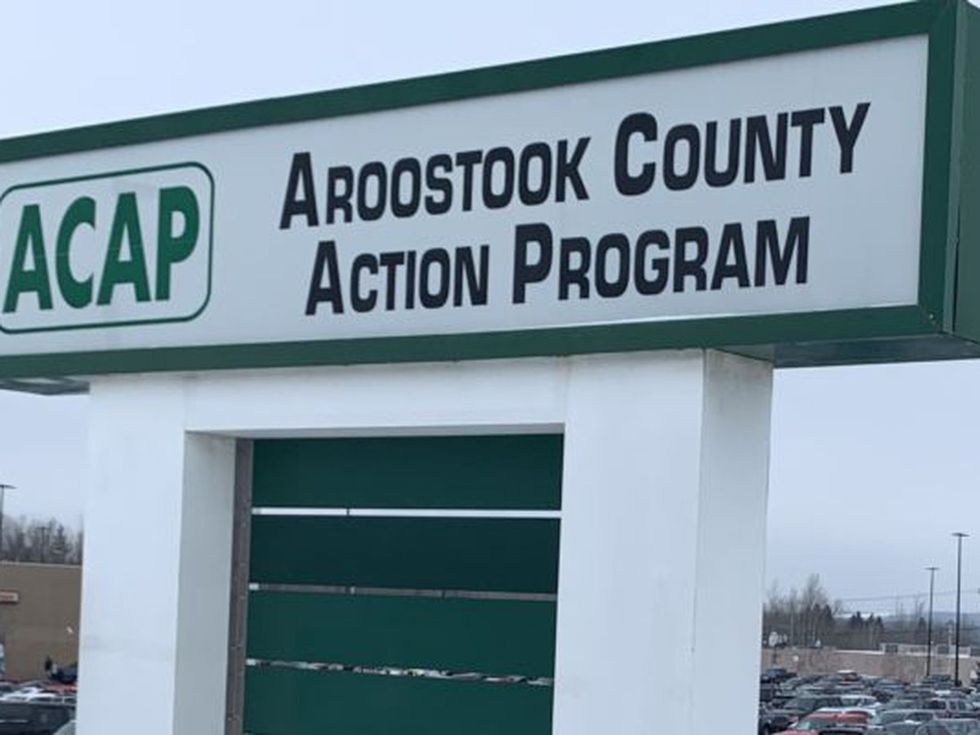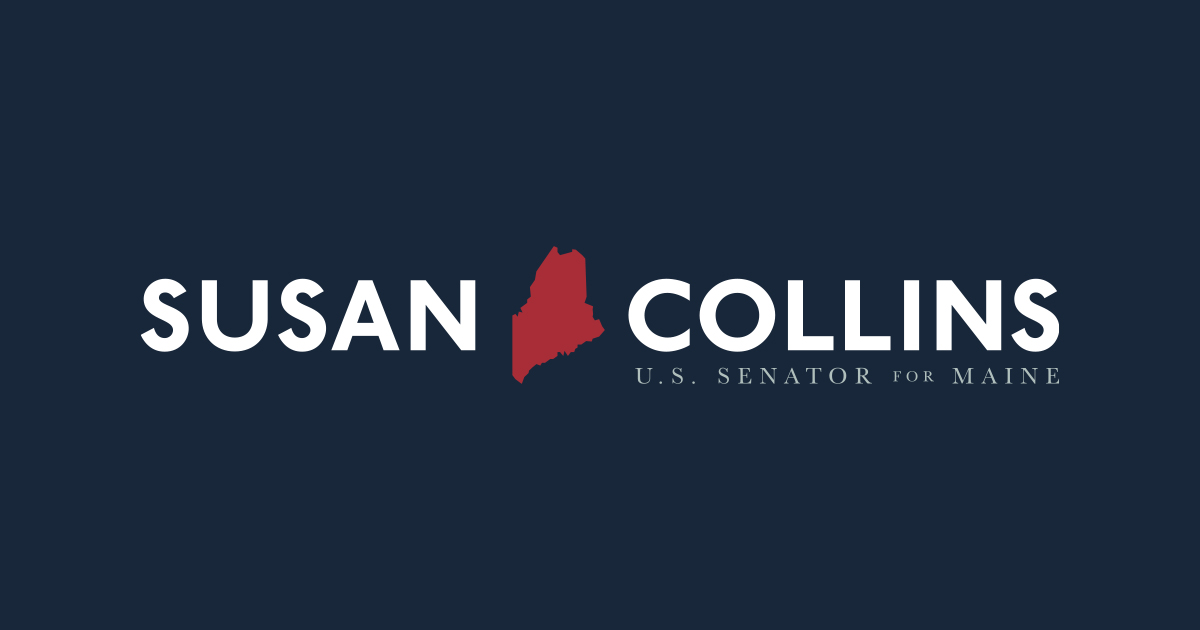[Article] Reaching the Underserved
Energy Disrupter
At Columbia Gas of Ohio, we work to identify and engage income-qualified customers, with the goal of providing them no-cost services to increase the energy efficiency of their homes and reduce their energy bills. We made a switch in 2017 from marketing primarily to customers who were participating in the utility energy assistance programs to marketing campaigns designed for lower-income customers who were not participating in the energy assistance programs. Although we succeeded in increasing program awareness, we discovered decades-old program policies that were limiting income-qualified customers from participating in the program. These were
- rental customer policies requiring substantial landlord investment for natural-gas appliance repairs and/or replacements; and
- policies limiting program participation to residential structures of no more than four contiguous units.
We identified the barriers caused by these policies and have made updates to overcome these barriers. Here is how we changed to better serve more of our customers.

A crew member from Kno-Ho-Co Ashland Community Action Commission demonstrates infrared technology during a Weatherization Day open house. (Kno-Ho-Co Ashland Community Action Commission)
Program History and Design
Columbia Gas of Ohio is the largest natural-gas utility in the state, serving approximately 1.4 million residential, commercial, and industrial customers in its 61-county service territory. The WarmChoice program was established in 1987 as an outgrowth of Columbia’s low-income Residential Conservation Service energy audit program, which was offered from 1983 to 1985, and its low-cost weatherization program, which was offered from 1985 to 1987. From its inception through December 31, 2017, the WarmChoice program has provided no-cost weatherization services to over 67,000 customers.
WarmChoice was one of the first utility weatherization programs in the nation to partner with a low-income community-based weatherization network to provide services. While WarmChoice was originally designed as a stand-alone service, during 1994 the program experimented with a cost-share approach in which it shared resources with Ohio’s Home Weatherization Assistance Program (HWAP).
The WarmChoice program provides customers whose incomes are at or below 150% of Federal Poverty Guidelines (FPG) with no-cost whole-home weatherization, which includes an energy inspection and safety checks on natural-gas appliances. Potential energy efficiency measures include attic and wall insulation; floor insulation over unconditioned spaces; duct insulation in unconditioned spaces; natural-gas water heater measures; air and duct leakage sealing; and repair or replacement of natural-gas furnaces, water heaters, and cookstoves. Every home receives a final health and safety check, a post-blower-door test, and a check to verify that all measures were installed to program standards.
Energy Intensity for Income-Qualified Customers
Figure 1 shows the age of the homes of customers who are on a percentage of income payment plan (PIPP) or home energy assistance program (HEAP)—as a proxy for customers who are eligible for WarmChoice services—compared with customers who are not on PIPP or HEAP. Customers who are on PIPP or HEAP tend to live in older homes; about 75% live in homes built prior to 1970, as compared to about 54% of customers who are not on PIPP or HEAP. The age of a home has a significant impact on its energy use. On average, customers on PIPP or HEAP use approximately 16% more natural gas and have a 50% higher energy intensity than customers who are not on PIPP or HEAP.
Age of Homes Distribution
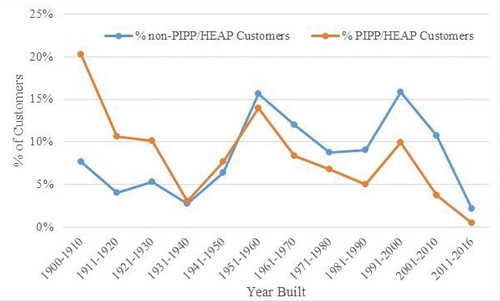
Figure 1. Distribution of age of home for PIPP/HEAP customers and non-PIPP/HEAP customers, as of December 2017.
Based on US Census data from the 2010–14 American Community Survey, approximately 18% of families in Columbia’s service territory have incomes at or below 150% of the FPG. Renter households also experienced higher energy burdens than the median household (4% and 3.5%, respectively), and low-income households experienced a median energy burden 3 times that of higher-income households (7.2% and 2.3%, respectively) (Drehobl and Ross, 2016). Additionally, renters pay almost 20% more per square foot than home owners, indicating that they live in less efficient homes. By targeting this group of customers with no-cost, whole-home weatherization services, Columbia can help reduce their energy burden.
Natural-Gas Savings for the WarmChoice Program
Figure 2 shows the average net annual natural-gas savings achieved by the WarmChoice program from 2000 through 2015. The program has achieved average annual natural-gas savings of 320 Ccf per customer over this time period. Figure 3 shows the average percentage reduction in natural-gas usage for the WarmChoice program from 2000 through 2015. On average, WarmChoice participants have consistently saved over 25% of their pre-weather-normalized natural-gas usage through the program. Columbia attributes this high level of natural-gas savings to the fact that the program focuses on key technologies and energy efficiency measures that save the most, and that it targets services to high-usage customers. Figure 4 shows an example of the net natural-gas savings in homes where a combination of major measures was installed. It shows that on average the combination of attic insulation, wall insulation, and heating-system replacements results in the highest natural-gas savings.
WarmChoice Net Average Savings per Year

Figure 2. Average WarmChoice net natural-gas savings, 2000–2015.
A Community-Based Approach
Here are some examples of successful collaborations that allowed Columbia and other organizations to help more Ohio residents with weatherization and safety services.
WarmChoice Average Savings Percentage per Year
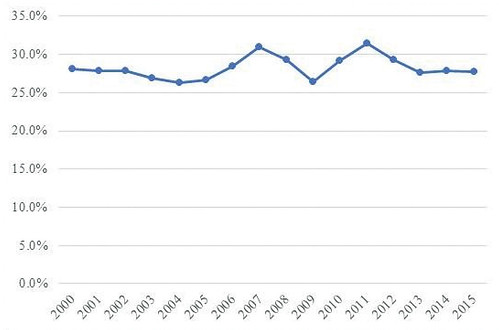
Figure 3. Average WarmChoice natural-gas savings as a percentage of prenormalized annual natural-gas consumption, 2000–2015.
Net Savings by Major Measure Combination

Figure 4: Net natural-gas savings by major measure combination. (Number of houses by measure in parenthesis.)
Weatherize Murray City and Nelsonville. Columbia partnered with the Corporation for Ohio Appalachian Development (COAD) on its Weatherize Murray City initiative in October 2010 to “concentrate materials and energy retrofit teams in one community for an extended period and [focus] on upgrading homes block by block rather than one at a time” (Gerdes, 2013). See also “Weatherize Murray City,” HE Jan/Feb ’13, p. 42). Through this approach, COAD was able to combine resources, including Columbia’s WarmChoice program, to provide no-cost, whole-home weatherization services to residents. The approach resulted in “74% of the town’s more than 200 homes” receiving weatherization services. Columbia’s WarmChoice program was able to contribute to the success of this initiative by weatherizing 31 homes between 2010 and 2012. This was over 6 times as many customers as the program had served in the area over the prior ten years.
Using the Murray City project as a template, Columbia launched a community-inclusive approach to energy efficiency in the city of Nelsonville, Ohio, a rural community of 5,000 residents in Athens County. Nelsonville was selected for this initiative due to its older housing stock, high average energy usage per home, and area median income of residents, and for the strong partnership of energy efficiency programs offered by Columbia, American Electric Power (AEP) Ohio, and the Hocking Athens Perry Community Action program.
To better serve the community and encourage participation, all Columbia customers regardless of income were qualified for the assisted tier of its Home Energy Audit and Rebates program, which provides home weatherization services at a total out-of-pocket cost of $300 to customers who have incomes greater than the WarmChoice guidelines, but who are at or below 80% of area median income. Columbia customers who were eligible for WarmChoice received full weatherization and health and safety services at no cost.
But with well over half of Nelsonville residents living in rental properties, the utility was concerned that local landlords would not allow WarmChoice-eligible tenants to participate, citing the considerable risk of having to fund the replacement of unsafe furnaces that could not be repaired. After meeting with local landlords, Columbia reduced the landlord contribution to a $500 total out-of-pocket investment for the replacement of defective heating units with high-efficiency furnaces. This departure from the long-standing WarmChoice policy requiring a hefty landlord contribution for furnace replacements ultimately led Columbia to remove the landlord contribution requirement altogether and opened the door to opportunities to serve even more income-eligible rental customers.
Community Energy Savers—Athens County, Ohio. In 2015, Columbia partnered with AEP Ohio to collaboratively launch its Community Energy Savers (CES) program in Athens County. Through this program, both utilities engaged with local leaders to promote energy efficiency via a grassroots approach to Athens County residents and businesses. The goal of the program was to increase participation in each utility’s energy efficiency programs, and provide an incentive to the community for an energy efficiency project. The Athens County CES program launched in September 2015, and ran through January 2016. The community exceeded its combined electric and natural-gas goals and received funding for energy efficiency enhancements for the Athens County Public Library. This program helped raise awareness of energy efficiency programs for both utilities and provided services to customers who might not have participated on their own. Columbia and AEP Ohio continue to work together to implement this program in income-diverse communities that would benefit from this strategic approach to energy efficiency.
Community-Based Organizations. The long-standing partnership between Columbia and the low-income community action network remains the basis for delivering the WarmChoice program. An average of 56% of customers served through the WarmChoice program from 2005 to 2017 were served with funds that were leveraged with other sources from programs administered by the community action network. The Community Action Agency (CAA) network is a one-stop shop for customers who are seeking various types of assistance to learn about and participate in the WarmChoice program. CAAs and community-based organizations are trusted sources in the community, offering energy assistance, senior programs, early-childhood and after-school programs, food and clothing, and job training and transportation.
Columbia Gas Outreach Initiatives
Here are some other ways that Columbia helps low-income Ohioans to have more efficient, comfortable, healthy, and affordable homes and apartments.
Philanthropy. Columbia provides its employees with opportunities to volunteer at and gives money to programs that offer food and shelter to those in need. To extend awareness and encourage participation in the WarmChoice program, Columbia gives branded reusable grocery bags with program materials inside to food pantries and seasonal pop-up produce markets. In addition, program materials are distributed to customers who participate in the Meals on Wheels lunch program. These forms of outreach build on the strength and credibility of local social services and are delivered in a familiar and positive way.
e3 smart Program. Columbia works with the Ohio Energy Project to support the e3 smart (Energy Efficiency Education) program. This program provides free instructional materials focused on the science of energy efficiency to teachers in the 4th through 12th grades. Students receive free energy-efficient products to install in their homes, including an energy-efficient showerhead and kitchen and bathroom aerators. The program also helps raise awareness of the WarmChoice program. In addition to the energy-saving materials, students receive large, colorful magnets with easy energy savings tips and contact information on receiving no-cost weatherization services.
Marketing. Columbia has historically marketed its WarmChoice program to customers participating in the HEAP and PIPP energy assistance programs. In order to reach customers in new ways, Columbia expanded its marketing tactics to include digital advertising, including Facebook and Google search. The program is featured on the Columbia website and offers a link to an online application. Columbia saw a 114% increase in direct traffic to its WarmChoice web page, and an 11% increase in organic search from 2016 to 2017 as a result of the new marketing tactics that it deployed in 2017.
The Underserved Customers. Since its inception, the WarmChoice program has been available to both homeowners and renters. In recent years WarmChoice marketing efforts were redesigned to reach as many potential customers as possible. While these efforts were highly successful, little consideration was given to rental status and the impact the landlord contribution policy would have on rental applicants. In reviewing historical program participation data, Columbia found that the rental market had been underserved by the program. Columbia estimates that as of the end of 2017, approximately 32% of its customers were renters, but the number of rental customers served through the WarmChoice program was less than 20% each year from 2000 through 2015 (see Figure 5). While there were high populations of renters in Columbia’s service territory, the percentage of customers who received services through the WarmChoice program was skewed toward owners.
In 2016, the Ohio HWAP made changes to allow weatherization services to proceed without a landlord contribution toward addressing major health and safety issues. These services included furnace replacements. While this change helped boost the level of WarmChoice participants who were renters, because costs were shared between HWAP and the WarmChoice program, it also created a huge drain on the limited health and safety funds that must be made available not just to Columbia gas customers, but to HWAP participants of all fuel sources. The impact of this change was an increase in rental participation in WarmChoice from approximately 10% in 2015 to approximately 35% in 2016 (see Figure 5). This HWAP policy change, and the lessons learned from the CES project and the Weatherize Nelsonville and Weatherize Murray City projects, further drove home the need to reconsider Columbia’s landlord contribution requirement.
Historically, the WarmChoice program required a substantial landlord financial contribution toward heating unit replacements and other significant heating repairs in rental properties when the landlord was not also income qualified. Columbia was learning that this program requirement often created a barrier to rental customers who wished to participate in the program. Knowing that they might have to pay hundreds of dollars toward a heating-unit replacement, many landlords refused to allow their tenants to participate—even when the weatherization component came at no cost. If the tenant was allowed to participate, but the heating unit was identified as being unsafe and unrepairable, the landlord often refused to cooperate, leaving the tenant with an unsafe or inoperable heating unit, and the inability to move forward with energy efficiency improvements. Over time, WarmChoice providers began to focus customer-recruiting efforts on homeowners rather than on renters. The investment of resources on the customer-intake and home inspection process was too great to risk having the job ending or delayed because the landlord refused to cooperate.
In 2017, in order to address this gap between the percentage of customers who rented and the percentage of customers who rented and received services through WarmChoice, Columbia removed the landlord contribution requirement. Reasoning that low-income housing usually remains low-income housing, and that an investment in energy efficiency and the remediation of health and safety issues ensures safer, more comfortable, and more affordable housing, Columbia developed and implemented a strategic direct-mail and awareness campaign specifically targeting rental customers. As a result of this change, rental property participation in WarmChoice increased from an average of 15% in program years 2000 through 2015, to approximately 67% in program year 2017 (see Figure 5).
Number of Rental Customers per Year
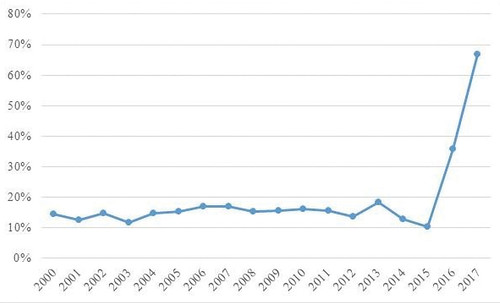
Figure 5. Columbia Gas of Ohio rental customers served through WarmChoice, 2000–2017.
Multifamily Pilot
The original WarmChoice program design limited program services to eligible dwellings of no more than four contiguous units. Columbia estimates that, based on the 2014 census, approximately 8% of housing units in its service territory are part of a multifamily building with five or more housing units. Historically none of the customers who lived in these buildings was eligible to receive services through WarmChoice, regardless of income. In 2017, the program reached out to IMPACT, an HWAP service provider with extensive multifamily experience in the city of Columbus, to pilot an initiative to serve natural-gas-heated buildings with more than four units.
learn more
Drehobl, A., and L. Ross. Lifting the High Energy Burden in America’s Largest Cities: How Energy Efficiency Can Improve Low Income and Underserved Communities. Washington, D.C.: ACEEE, 2016.
Gerdes, J. “Small Town, Big Energy Savings: Retrofitting Block by Block in Murray City, Ohio.” Forbes online, January 29, 2018.
U.S. Census. American Community Survey, 5-year Public Use Microdata Areas, 2010–2014, adjusted to reflect Columbia Gas service territory. Washington, D.C.: U.S. Census, 2014.
At the time IMPACT had just been authorized by the Ohio Development Services Agency to begin the process of weatherizing an 87-unit natural-gas heated multifamily complex owned and managed by the Columbus Metropolitan Housing Authority. All 87 units were individually metered, and residents are responsible for their gas bills. Nearly all of these customers received HEAP assistance and were enrolled in the PIPP program. This partnership has given Columbia an opportunity to learn how to deliver a multifamily program while providing services to a group of customers who were not previously eligible for WarmChoice funding. Additionally, the housing authority has benefited from the investment in valuable energy efficiency upgrades and the mitigation of health and safety issues that might otherwise have gone undetected. The leveraging aspect of the pilot will allow both HWAP and WarmChoice to realize a lower cost-per-unit investment, and potentially extend the program to more customers. Currently, Columbia is exploring opportunities to expand services to multifamily households throughout its service territory.
Partnerships Work!
Columbia’s successful partnerships and evolving marketing efforts have drawn more income-eligible customers into the WarmChoice program. By partnering with local, trusted sources, Columbia has been able to develop community-based approaches to increase participation in its program in specific, targeted areas. These enhancements have enabled more of Columbia’s income-eligible customers to benefit from health and safety improvements and energy efficiency measures that have made their homes more comfortable and have lowered their gas bills.
This article was supported with funding from DOE’s Weatherization Assistance Program.






